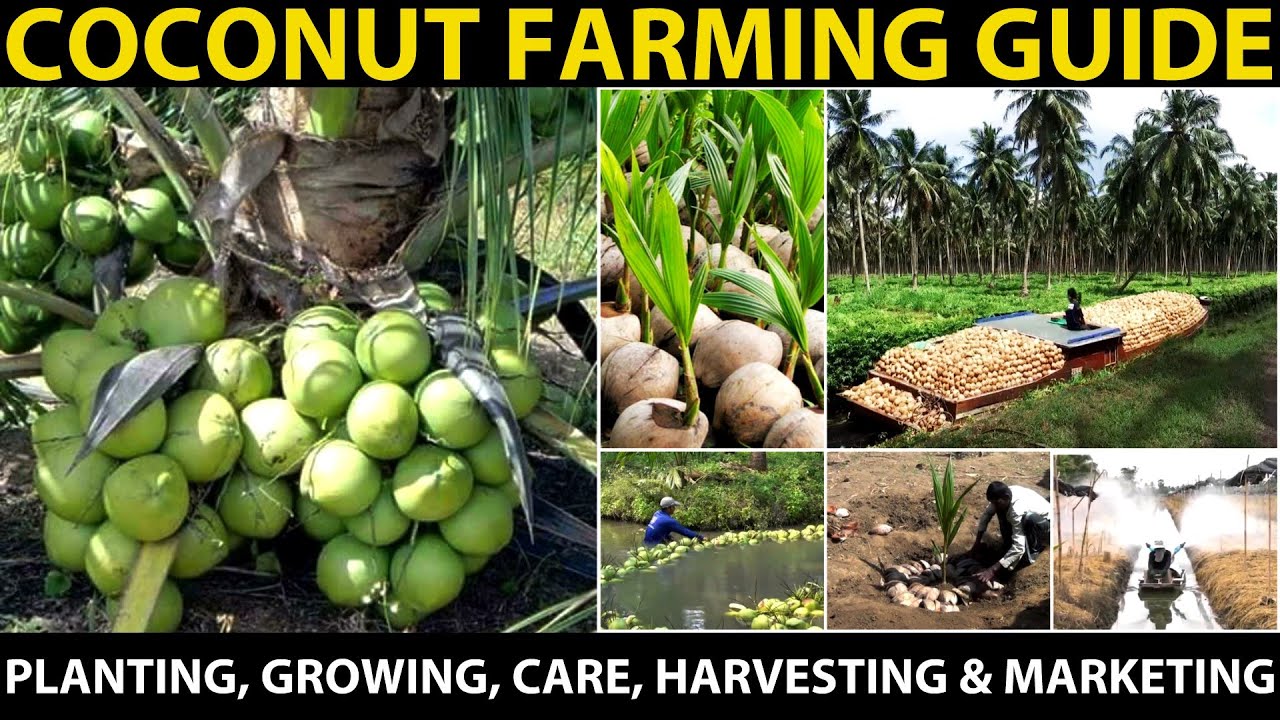Introduction:
Coconut farming, a cornerstone of tropical agriculture, has been an integral part of human culture and sustenance for centuries. Revered for its versatility and nutritional value, the coconut palm (Cocos nucifera) stands as an emblem of life in many coastal regions. In this blog post, we will delve into the intricacies of coconut farming, exploring the optimal growing conditions and techniques that contribute to a successful and bountiful harvest.
Growing Conditions:
- Climate: Coconuts thrive in tropical climates with consistent warmth and high humidity. The ideal temperature range for coconut cultivation is between 80°F to 95°F (27°C to 35°C). Frost and extreme cold are detrimental to coconut palms, so regions near the equator or coastal areas with mild temperatures are most suitable.
- Soil: Well-draining soil is crucial for coconut palms. Sandy loam or loamy soils with a slightly acidic to neutral pH (6.0 to 7.5) are ideal. Good drainage prevents waterlogging, a condition that can lead to root rot. Additionally, coconuts are known to tolerate saline soils, making them well-suited for coastal areas where other crops might struggle.
- Water: While coconut palms are generally drought-tolerant once established, they require consistent moisture during the initial stages of growth. Adequate irrigation is essential, especially during dry spells. However, stagnant water and waterlogged conditions should be avoided to prevent root diseases.
Cultivation Techniques:
- Planting: Coconuts are typically propagated from seeds. The seeds, or coconuts, are planted directly into the soil at a depth of around 8 to 10 inches (20 to 25 cm). Planting should be done during the rainy season, allowing the coconut palm to establish a robust root system.
- Spacing: Proper spacing is essential for healthy coconut tree growth. A distance of 25 to 30 feet (7.5 to 9 meters) between trees is recommended to ensure optimal sunlight exposure and air circulation. This spacing also facilitates ease of maintenance and harvesting.
- Fertilization: Coconut palms benefit from regular fertilization, especially during their early years. A balanced fertilizer with essential nutrients like nitrogen, phosphorus, and potassium supports healthy growth. Application rates should be adjusted based on soil quality and local conditions.
- Pruning: Pruning is crucial for maintaining the health and productivity of coconut palms. Removing dead or diseased fronds encourages better air circulation and reduces the risk of pest infestations. Additionally, pruning can help manage the height of the tree for easier harvesting.
- Pest and Disease Control: Regular monitoring for pests such as coconut mites, beetles, and diseases like lethal yellowing is essential. Integrated pest management practices, including the use of natural predators and disease-resistant coconut varieties, can help minimize the need for chemical interventions.
Conclusion:
Coconut farming, with its rich history and economic significance, continues to be a vital component of tropical agriculture. By understanding and implementing the right growing conditions and techniques, farmers can cultivate coconut palms that bear witness to the resilience and versatility of this remarkable tropical crop. As we navigate the challenges of modern agriculture, the coconut palm remains a beacon of sustainability, providing not only food and resources but also contributing to the ecological balance of diverse ecosystems.


